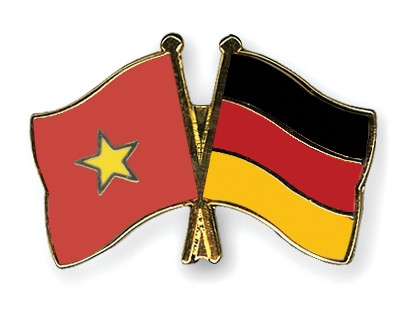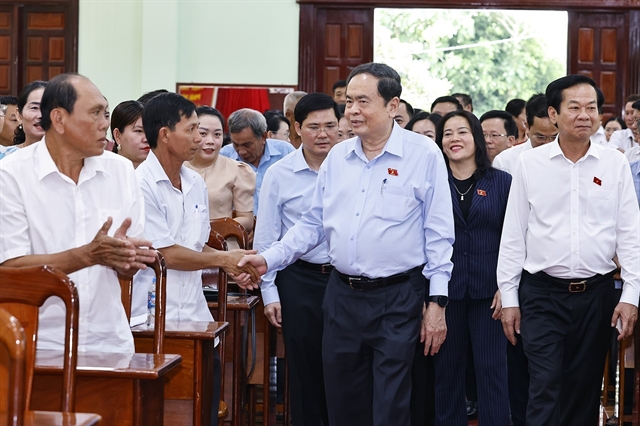 Society
Society
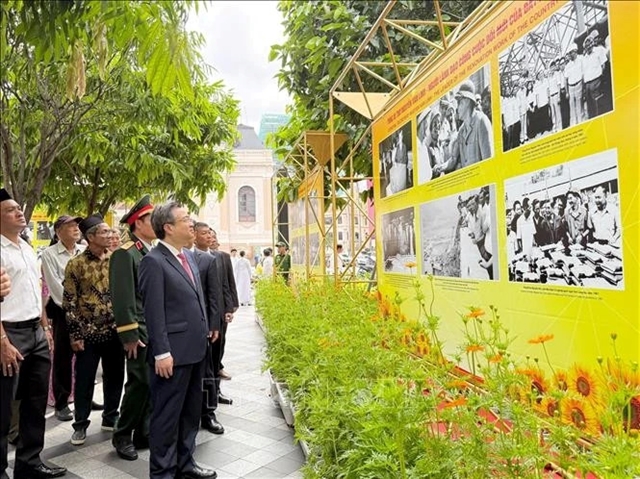
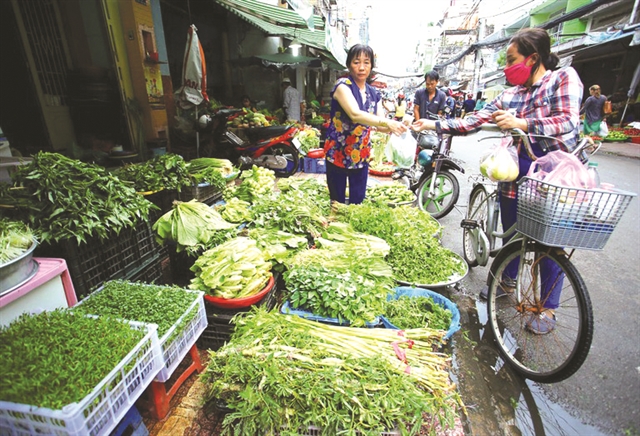 |
| A pavement market in HCM City. The high cost of living causes a large number of migrant workers to leave the city. VNS Photo Văn Châu |
By Lê Văn Châu
"With the same income of VNĐ18 million (US$720) per month, my family's quality of life improved significantly when I decided to leave HCM City for Bình Dương to work," said Trần Trọng Nhân from the southernmost province of Cà Mau.
Nhân said that after two years of living and working in Bình Dương, his family's finances had stabilised.
"Living costs, including accommodation, are 20 to 50 per cent higher in HCM City than in neighbouring provinces like Bình Dương. With the same salary, my family of three could barely meet basic needs in the city, leaving no room for entertainment, travel, or savings," he said.
He cited housing as a key factor, noting that a 20-square-metre rented room in HCM City costs between VNĐ2.5 and 4 million ($100-160) per month, while a similar room with better quality in Bình Dương costs only VNĐ1.5 million ($60).
Other expenses, such as kindergarten fees, are also significantly lower in Bình Dương. Thanks to the reduction in costs, Nhân's family can now save money and spend on leisure activities, including family outings and trips.
Nhân's experience reflects a growing trend of workers leaving HCM City due to its high cost of living. Rising prices for housing, utilities, and daily necessities are making it increasingly difficult for many families to sustain themselves. Even those with stable jobs and decent incomes find themselves struggling to make ends meet.
Another case is migrant worker Lê Văn Thương, 26, from the central province of Thanh Hóa, who recently decided to leave after four years working in HCM City.
Before moving south, Thương worked for a tourism event organisation in Hà Nội. Attracted by HCM City's vibrant job market and abundant opportunities for young people, he moved to the city in 2019, just before the COVID-19 pandemic began.
During the pandemic, he faced prolonged social distancing and harsh challenges. After the city reopened, Thương found work at an event organisation company with a monthly salary of VNĐ15 million ($600). However, high living costs in the city left him unable to save or even afford trips back to his hometown for holidays like Tết (Lunar New Year).
"Living in HCM City is expensive. Home rent, food, and other essentials leave no room for savings," Thương said.
After weighing his options for more than a week, he decided to move back to his hometown Thanh Hóa, where he found a job offering 20 per cent higher pay than his previous one in the city.
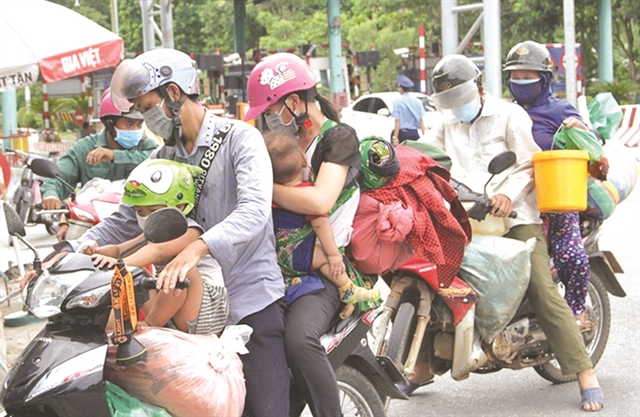 |
| Families of migrant workers on the way to their hometowns before Lunar New Year holidays. VNS Photo Văn Châu |
Migrant workers on the move
Nhân and Thương are part of a broader trend that is reshaping the labour landscape in HCM City. Over the past decade, the city has been a magnet for migrant labour from across Việt Nam, thanks to its dynamic economy, infrastructure, and job opportunities.
In 2019, HCM City attracted 11.5 per cent of the nation’s migrant workforce, ranking second in the southern economic hub after Bình Dương, which accounted for 26.3 per cent. However, the city has seen a steady decline in migrant workforce in recent years.
Phạm Chánh Trung, director of the Division of Population and Family Planning, said that the city’s number of new migrants had been decreasing continuously since 2022.
In 2022, for the first time, the city’s mechanical population growth rate (based on migration) dropped to 0.68 per cent, falling below the natural population growth rate of 0.74 per cent.
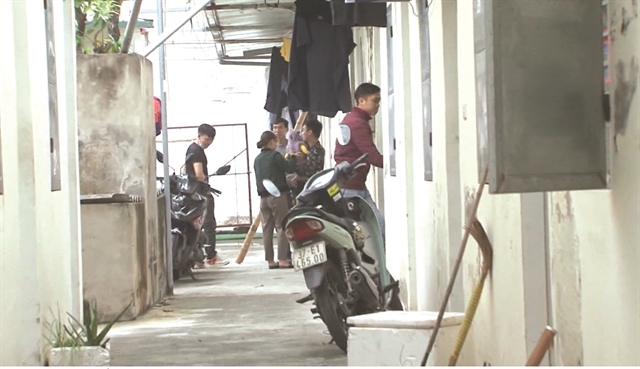 |
| Boarding houses in HCM City's Tân Bình District are deserted due to migrant workers returning to their hometowns. VNS Photo Văn Châu |
Between 2015 and 2021, the city’s mechanical growth rate was consistently higher, with an average of 170,000-180,000 new residents annually. However by 2023, this number had dropped dramatically to just 65,000.
Tân Bình District, which historically had the highest population growth rate in the city, has also seen a steep decline in the number of temporary residents.
Lê Thị Ngọc Dung, vice chairwoman of the District People’s Committee [District Administration], reported that the district’s migrant population fell to 346,570 in 2023 from 452,230 in 2020, a decrease of over 105,660 people.
Rising competition
Neighbouring provinces such as Bình Dương, Đồng Nai, and Long An are increasingly competing with HCM City for labour force. These provinces have invested heavily in infrastructure, housing, and social services, creating attractive alternatives for migrant workers.
Nguyễn Đức Lộc, head of the Social Life Research Institute, said these provinces had become more appealing due to lower living costs, better job opportunities, and improved living conditions.
“Provinces like Bình Dương and Đồng Nai have actively developed industrial zones and transport networks, offering migrant workers both affordability and accessibility. At the same time, the challenges in HCM City, such as rising costs and job instability, have become pushing factors,” he said.
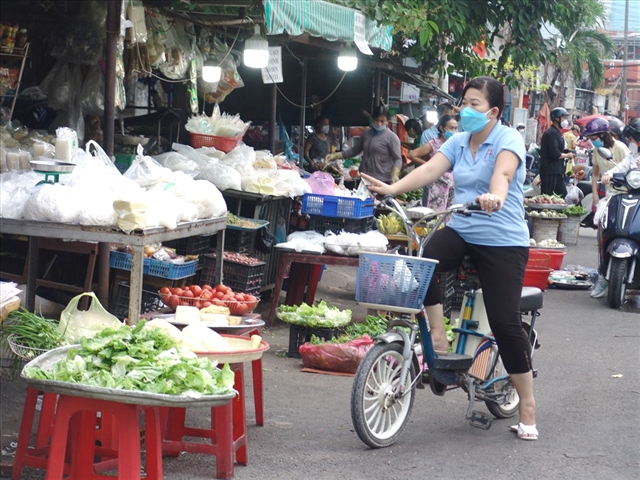 |
| The average income of workers in HCM City is below the common standard. VNS Photo Văn Châu |
Reports highlight that the city’s high cost of living is one of the biggest deterrents for migrant workers.
According to a study by the Anker Research Institute, the living wage in urban areas like HCM City is VNĐ8.61 million per month. However, the average income of a worker in 2023 was only VNĐ6.51 million, placing it fourth in the country after Bình Dương, Hà Nội, and Đồng Nai.
Labourers earning below the living wage are the first to leave, but even skilled workers may seek better opportunities elsewhere if the city cannot offer them a higher quality of life.
Challenges for businesses
The exodus of migrant workers is creating significant challenges for businesses in HCM City, particularly in labour-intensive sectors like textiles, agriculture, construction, and manufacturing.
Nguyễn Thanh An, chairman of the trade union at Việt Nam Samho Co Ltd, said his company was facing a severe labour shortage. "This year, the factory received many orders and needs 1,500 more workers. Despite offering incentives like pre-arranged accommodation, advance salaries, and transport, few candidates have applied," he said.
The shortage is not limited to one sector. A survey of over 2,000 enterprises conducted by the municipal Centre of Forecasting Manpower Needs and Labour Market Information revealed that recruitment challenges are widespread, particularly in industries reliant on migrant workers, such as footwear, electronics, trade services, and hospitality.
These shortages disrupt production and can have a ripple effect on supply chains, affecting the city’s overall economic performance.
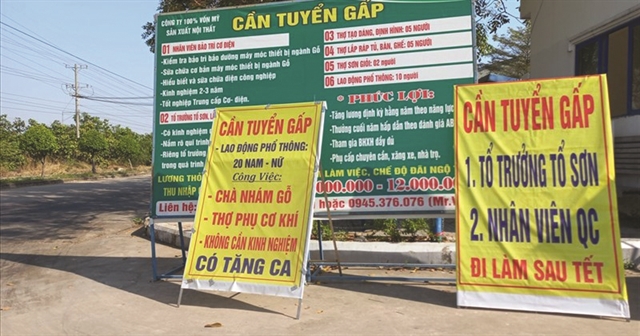 |
| Billboards offering factory jobs. Businesses in HCM City have difficulty recruiting workers. VNS Photo Văn Châu |
Experts said that HCM City must implement targeted policies to retain and pull in workers. Reducing living costs, improving access to affordable housing, and enhancing job security are among the most critical steps.
“The city needs to narrow the income gap and ensure migrant workers have access to essential services like education, healthcare and transport. Without these improvements, it will struggle to compete with surrounding provinces that offer a better quality of life,” said research institute chief Lộc.
Meanwhile, provinces such as Bình Dương and Đồng Nai continue to enhance their appeal with new industrial zones, improved infrastructure, and rural development programmes. These efforts create not only job opportunities, but also an environment where workers feel valued and supported.
The shift of labour migration from HCM City to neighbouring provinces reflects a broader trend in Việt Nam’s economic development. As smaller provinces invest in infrastructure and create new job opportunities, they are becoming increasingly attractive alternatives to major urban centres.
However, this phenomenon also raises questions about the sustainability of HCM City’s growth model.
If the city cannot retain its workforce, it risks losing its status as the economic hub of southern Việt Nam. Addressing these challenges will require bold policy decisions and a renewed focus on improving living conditions for all residents. VNS

